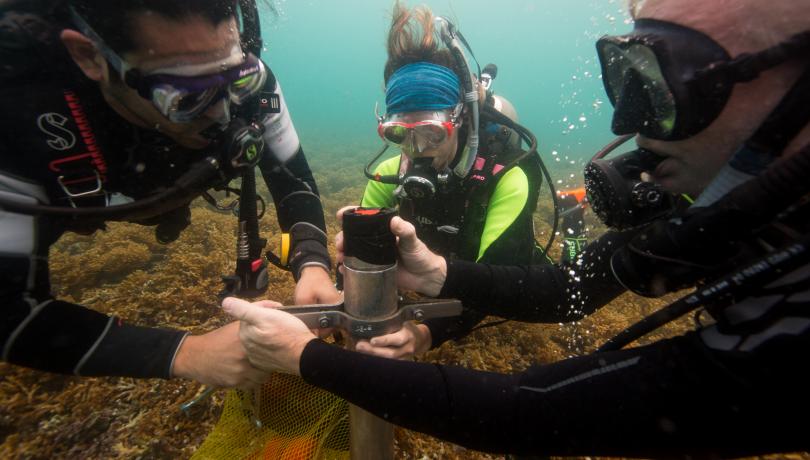A new study by researchers of the ICM and the STRI alerts that the accumulation of nutrients and fertilisers could further deplete shallower waters of oxygen, leading to the death of many coral reef species, if conditions do not improve.

A new study by researchers at the Institut de Ciències del Mar (ICM) in Barcelona and the Smithsonian Tropical Research Institute (STRI) suggests, through the reconstruction of environmental conditions over the past 2,000 years, that human activity could end up asphyxiating the shallowest coral reefs in Bocas del Toro, Panama, as is being already observed in the deepest coral reefs.
The research team began working on the study, recently published in the journal Ecography, in September 2017 after another group of scientists documented two intense hypoxic events in Almirante Bay near Panama’s border with Costa Rica, which caused the death of many species.
By installing a series of oxygen sensors at different locations and depths in Almirante Bay, the authors were able to observe that the water had very low oxygen levels close to the mainland and, especially in the deeper areas, due to the little circulation. Therefore, all the nutrients from sewage and fertilizer runoff from banana plantations accumulate within the bay. In contrast, the areas closer to the ocean, wave action reoxygenates the water.
Historical hypoxia
To find out whether these hypoxia events are increasing in frequency because of enhanced nutrient input and or warming or they have been occurring in the past, researchers extracted four cores from two reefs at 3 m depth, one currently experiencing hypoxia and one not, as well as two additional cores from a deeper part (4.8 m) of the hypoxic reef where the corals forming the reef are currently dead. Then, the experts analysed the isotopes of the fossil gastropod shells contained in the cores.
Researchers created a timeline by dating the coral fragments through the cores and classified the gastropods by their role in the ecosystem (e.g. herbivore, carnivore or parasite). As a result, they were able to observe an increase in the proportion of herbivores and a decrease in carbon isotope values in the deepest part of the reef before the reef stop accreting about 1,500 years ago, suggesting that hypoxia may be the origin of the deterioration of the deeper part of the reef.
“We also found similar signals in the shallow part of the hypoxic reef over the past decades, indicating that hypoxia may be expanding to shallower depths with no historical precedent. Our hypothesis is also supported by the current spatial distribution of oxygen in the bay and the available historical data”, explains the ICM researcher and leading author of the study Blanca Figuerola.
Warning signs of future changes on Caribbean reefs
According to the study, the timing of the deep reef shutdown coincides with no known major climatic changes but it does coincide with an expansion of human populations in the region. This indicates that land clearing may have promoted an increase in hypoxic waters by fuelling nutrient run-off in to the bays.
"Our historical data highlight that, if contamination is not reduced, the shallower and relatively healthier reefs could meet the same end as the deeper ones", warns STRI researcher and co-author of the study Aaron O'Dea.
"It was amazing to discover that microgastropods can contain important information about past hypoxic conditions and can provide warning signs of future reef changes", said Figuerola, who expects to be able to repeat similar studies on other reefs to delve deeper into the causes and consequences of this kind of events.